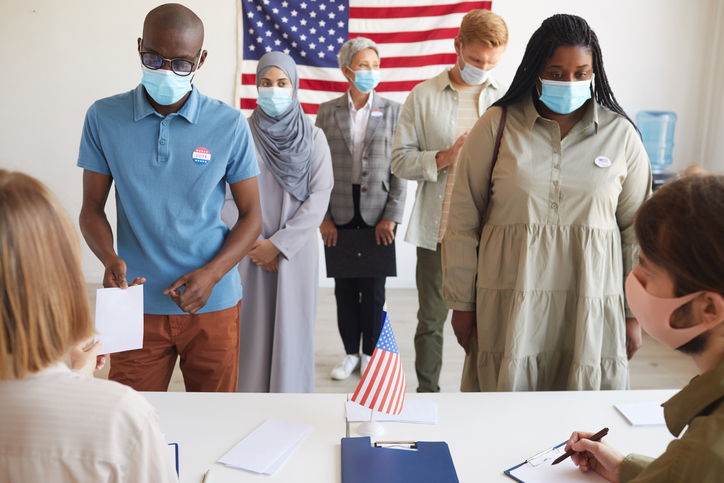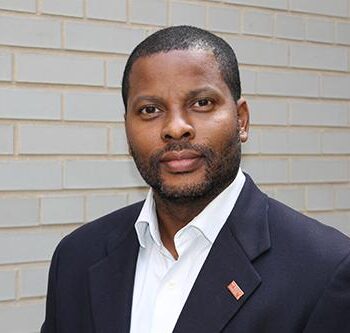Every couple of years during election season, grassroots organizers grow older than our years with frustrations borne of these questions. We are tasked with proving that “sustained community organizing is a good investment” to those funders motivated by election outcomes, but we are rarely well-resourced enough to build the case for what we know to be an intuitive truth.
This year, despite its many challenges, may have provided the hard evidence, in the hardest of election environments, that building movements based on the needs and concerns of working people is measurably more effective at winning votes — and doing so in a cost-effective way. That is to say, multiple contacts throughout the cycle with a voter — first to organize them as part of a non-electoral campaign, then to organize them around an electoral campaign — generates votes at a more cost-efficient rate than contacting the voter only during election season.
How do we know this? Working America runs randomized controlled tests of each aspect of our program — more than eighty tests this year, including 14 on election night — measuring our impact on vote choice, action taking, voter turnout, and other variables indicating a response to contact.
Election night surveys comparing the vote choice of people we contacted with control groups indicate that Working America’s persuasion efforts added 468,598 votes for Joe Biden and pro-worker candidates down the ballot in 14 key battleground states. We did it by putting relationships first and meeting people where they are on the issues that matter to them; by innovating our traditional field program with other tactics, such as text messaging, mail, and digital advertising; and by transforming data and analytics testing processes into a large-scale continuous evaluation and learning system.
In a typical cycle, year-round organizing means knocking on doors five nights a week, 52 weeks a year, talking to working people about everything from heating assistance to protecting access to mental health care. This year, the tactics were different but not the strategy. We contacted working people on the same type of issues using computers and cells phones instead of clipboards and iPads. We built relationships by asking people what matters to them, listening respectfully, helping them connect the dots, and staying in touch continuously. And we grounded our work in the daily concerns of working people. What lessons did we draw about the tangible value of year-round organizing?
Lesson One: Building the base works better when we talk to voters all year about their lives — not for two months about candidates.
Progressive organizers talk a lot about year-round organizing. Unfortunately, financial realities make it difficult to sustain a permanent presence in communities. During election years, the all-too-familiar pattern of late investment into organizing programs does not provide clear and compelling evidence of the effects of organizing on voters. Many funders decry the focus on transactional investments and saturation media but end up supporting these short-term strategies (more advertising than organizing) because of the lack of financially and electorally viable alternatives. This not only leads to inefficient campaigning; it damages our larger mission of building the base and empowering communities.
Working America’s primary goal this year was to build trust and agency among working-class voters of all races, from urban centers like Atlanta and Detroit to small towns like Scranton and rural areas like Fayetteville. In March, we reached out to over three million people, among them working-class people, young people, people of color, and Fox News watchers (identified in our tracking survey as “not too concerned” about COVID). We asked them to “do their part” to prevent infections from spreading. In a follow-up measure (we embed randomized control groups into all of our work), we saw a 12 percent increase in mask wearing. Through a simple message delivered in a time of need, we built credibility.
As a result, voters also listened to us about the election. We tested a suite of voter contact efforts, including phones, texts, emails, social media outreach, letters, and mail. Time after time, we found that taking the time to build relationships — by engaging voters multiple times across multiple modes of contact — resulted in far more votes than cold contacts.
Lesson Two: Membership matters.
Our rigorous testing and analytics program allowed us to identify voters likely to be persuaded by our message, but we had the greatest impact with Working America’s membership — people who had signed up with a canvasser, mostly at their front doors, to become members of our organization.
Our election night surveys of 194,865 battleground state voters and the 14 randomized controlled test (comparing our contact universe to a control group) confirmed what we have seen every cycle: vote gain among Working America members was two-to-three times greater than general public voters with identical profiles (measured through partisanship scores, vote history, race, and other observed variables).
In Pennsylvania, a state where Working America has had a sustained presence for 17 years, we went into this election with 575,000 members. That’s 575,000 voters who know who we are and trust us to advocate for their best interests. Based our internal data, we believe our program added 60,566 votes for Joe Biden and Kamala Harris — 89 percent of the margin by which Democrats carried the state.
Communicating with members is not only more effective in producing electoral outcomes; it’s more cost-effective too. Looking at cost-per-vote metrics from our election night randomized control group measurements, you’ll see a clear cost advantage in communicating with members.
|
Cost per Vote: Working America Members
|
Cost per Vote: General Public
|
|
|
Social Media News Boosting
|
$3
|
$10
|
|
Letter-Writing
|
$37
|
$179
|
Even though the general public numbers are exceptional for a presidential campaign, these membership numbers show an incredible value in producing outcomes at scale. These results are the rule more than the exception. Dozens of our randomized control trials tell the same story: even when a program is measurably efficient at gaining votes, the subgroup of existing members are even more responsive.
Lesson Three: We need to change our notions about what constitutes organizing.
Working America’s traditional organizing program is based on “front porch” organizing, where canvassers go door-to-door in neighborhoods across the country, building strength in numbers by organizing working people to take action to improve their daily lives. Face-to-face canvassing is in our bones.
While we have always supplemented this personal contact with calls, emails, and text messages to members, it took a global pandemic to get our organization to develop a robust program of remote organizing at scale. What we found was that we could build real relationships within communities (for example, through our efforts around COVID safety) even though our organizers were working virtually. We also found that those interactions produced similar results as our regular organizing model. What we lacked in depth, we made up for in scale.
We didn’t simply move our canvassing online. We innovated our program — different tactics, same strategy. Instead of knocking doors, we promoted news articles on Facebook. One example comes from a research project conducted with David Broockman and Josh Kalla (in their personal capacities). Working America developed a digital persuasion program using “boosted news” ads. The news ads were selected because they were not incendiary or political; they came from trusted, often local, news sources; and they reflected the real feedback we heard from voters. The tactic added one vote for every one hundred voters exposed to the ads. If the voters were already Working America members, we added three votes per hundred.
It is humbling to learn that our sense of “organizing,” when confronted with reality, gave way to other approaches that, while less intimate, were especially cost effective and scalable. While the evidence is clear that quality canvassing has the highest impact per contact, digital organizing is now a permanent part of our playbook.
Lesson 4: This insight was really only possible because of consistent early investment in clinical testing and analytics.
Funders understandably need evidence that our programs work and that we’ll accomplish what we promise. For too many organizations, that type of data isn’t available or even possible.
Over the years, Working America has built a testing and learning system that meticulously evaluates and adjusts every component of our program. We test who we talk to, how we talk to them, and what we say — and then we take our findings and make our programs even better. We make sure what we do actually works, and then we do that work at scale.
The bedrock of our analytics system is rigorous randomized clinical testing. By comparing differences in opinion and behavior based on our communication of otherwise statistically identical populations, we can tell what’s working. By replicating that type of testing more than 250 times — including more than eighty times this year alone — we find what consistently works. And by partnering with the leading academics and data scientists in progressive politics and subjecting our findings to independent rigorous review by leading political science researchers and analysts, we have built a learning system that increases the knowledge base of the progressive movement.
We are not alone. A growing legion of organizers has committed to this type of rigorous testing, advancing the collective effectiveness of our movement. What we have found is that even in a chaotic environment like 2020 (perhaps especially in an environment like 2020), fundamentally sound research practices, like randomization, independent measurement, replication, and validation of promising results, works.
Lesson 5: We can’t afford not to do this work.
Seventy-four million Americans voted to re-elect Donald Trump. They voted for Donald Trump even though, as of this writing, 281,000 Americans have been killed by COVID-19. They voted for Donald Trump even though he stoked such deep division in our country that our very democracy was threatened. They voted for Donald Trump even though hundreds if not thousands of children remain separated from their parents at the border.
Blaming Donald Trump won’t solve the long-term problems our country faces, and it won’t win back these voters for Democrats. The unfortunate reality is that reactionary politics is alive and well. We need look no further than U.S. Senate and House races where Democrats have not fared as well this cycle to see the challenges we continue to face.
Change will only come if we empower communities, build the base, and motivate our members. That means talking to working-class people about the issues they face in their day-to-day lives and giving them opportunities to make change. Investing in sustained, face-to-face organizing that reaches all working-class voters must be the priority in 2021. After all, elections are not about elections. They are about voters and their lives.

